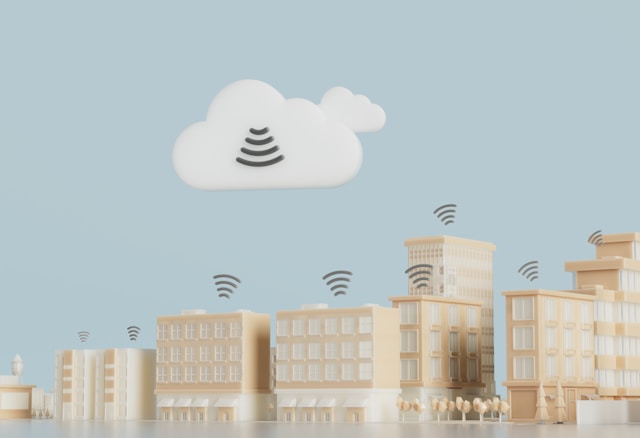
The Internet of Things (IoT) is reshaping the healthcare landscape by enabling real-time monitoring, data-driven insights, and personalized treatment. The integration of IoT technology in healthcare promises to enhance patient care, streamline operations, and drive innovations in medical practice. However, this transformative potential comes with its own set of challenges. This article explores the future of IoT in healthcare, highlighting key innovations and addressing the challenges that must be navigated.
1. Innovations in IoT-Enabled Healthcare
IoT is driving several groundbreaking innovations in healthcare:
- Remote Patient Monitoring: IoT devices such as wearable fitness trackers, smartwatches, and implantable sensors enable continuous monitoring of vital signs like heart rate, blood pressure, and glucose levels. This real-time data allows for early detection of health issues and timely interventions, reducing hospital visits and improving patient outcomes.
- Telemedicine and Virtual Care: IoT technology facilitates telemedicine by enabling remote consultations through video calls and digital communication tools. Connected devices can transmit health data to healthcare providers, allowing for virtual assessments and personalized care plans, which is especially valuable for patients in remote or underserved areas.
- Smart Medical Devices: IoT-enabled medical devices, including smart inhalers, insulin pumps, and medication dispensers, provide more precise and automated treatment options. These devices can track usage, deliver medication, and send alerts to both patients and healthcare providers, ensuring adherence to treatment regimens.
- Predictive Analytics and Personalized Medicine: By analyzing data from various IoT devices, healthcare providers can gain insights into patient health trends and predict potential health issues. This data-driven approach supports personalized medicine, where treatments and interventions are tailored to individual patient needs based on their unique health data.
2. Enhancing Operational Efficiency
IoT contributes to operational improvements within healthcare systems:
- Asset Tracking and Management: IoT sensors and RFID tags help track and manage medical equipment, supplies, and medications within healthcare facilities. This real-time tracking reduces loss, ensures availability, and optimizes inventory management.
- Smart Facility Management: IoT systems can control and monitor various aspects of healthcare facilities, such as lighting, heating, ventilation, and air conditioning (HVAC). Smart facility management improves energy efficiency, reduces operational costs, and enhances the overall environment for patients and staff.
- Automated Workflow Solutions: IoT technology can streamline administrative tasks through automated data entry, patient scheduling, and communication. These solutions reduce manual workload, minimize errors, and improve overall efficiency in healthcare settings.
3. Addressing Challenges and Concerns
While IoT offers significant benefits, it also presents several challenges:
- Data Privacy and Security: The collection and transmission of sensitive health data raise concerns about privacy and security. Ensuring robust data protection measures, encryption, and compliance with regulations such as the Health Insurance Portability and Accountability Act (HIPAA) are crucial for safeguarding patient information.
- Interoperability and Integration: Healthcare systems often use diverse IoT devices and platforms that must seamlessly integrate and communicate with each other. Establishing standards and ensuring interoperability are essential for creating cohesive and effective healthcare solutions.
- Cost and Implementation: The initial investment in IoT technology, including devices, infrastructure, and training, can be substantial. Healthcare organizations must balance these costs with the long-term benefits of improved patient care and operational efficiency. Additionally, the implementation process requires careful planning and coordination.
- Data Management and Analytics: Handling the vast amounts of data generated by IoT devices presents challenges in data storage, management, and analysis. Developing effective data governance practices and utilizing advanced analytics tools are necessary for deriving actionable insights and making informed decisions.
4. Future Directions and Opportunities
Looking ahead, the future of IoT in healthcare holds several exciting opportunities:
- Advancements in AI and Machine Learning: Integrating IoT with artificial intelligence (AI) and machine learning can enhance predictive analytics, automate diagnostic processes, and provide deeper insights into patient health. AI-powered algorithms can analyze complex data patterns and support decision-making in clinical settings.
- Wearable Health Tech Innovations: Future developments in wearable technology will likely include more advanced sensors and longer-lasting devices. Innovations in this space will continue to improve health monitoring capabilities and expand the range of measurable health metrics.
- Enhanced Patient Engagement: IoT technology has the potential to foster greater patient engagement through interactive health apps, personalized health recommendations, and real-time feedback. Empowering patients with tools and information can lead to better self-management and adherence to treatment plans.
- Integration with Smart Homes: The integration of IoT devices with smart home systems can further enhance patient care. For example, smart home technologies can support independent living for elderly or disabled individuals by providing automated reminders, fall detection, and remote monitoring by caregivers.
Conclusion
The future of IoT in healthcare is filled with promise and potential. From remote patient monitoring and telemedicine to enhanced operational efficiency and personalized medicine, IoT technology is driving transformative changes in the healthcare industry. While challenges such as data privacy, interoperability, and cost must be addressed, the opportunities for innovation and improvement are vast. By leveraging IoT advancements and overcoming these challenges, the healthcare sector can achieve significant strides in delivering better care, optimizing resources, and improving patient outcomes.






